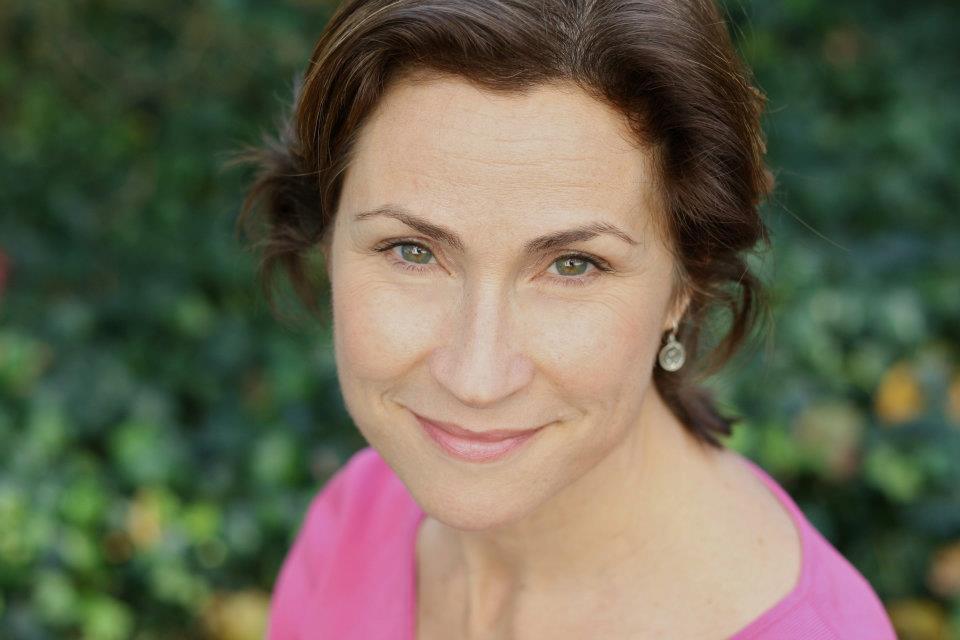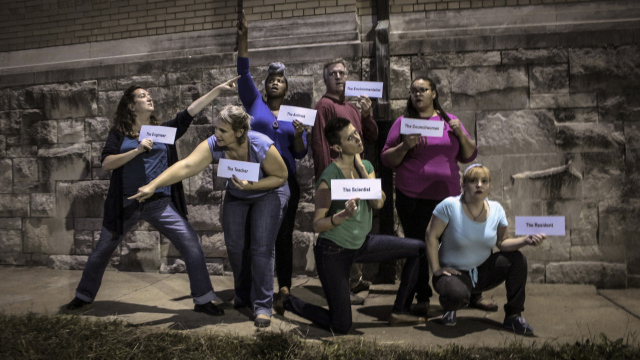Photo by Eddie Dant.
Interview by Scott Dowd
Entire contents ©Fearless Designs, Inc. All rights reserved.
Last November we learned that Bruce Simpson will be stepping down from his leadership role at the Louisville Ballet when his contract comes up this July. It has been twelve years since he succeeded Alun Jones as artistic director and four since he added the duties of executive director. Over the years we have featured Bruce a number of times in these pages, but it really seems like just yesterday that he introduced the formal kilt to The Kentucky Center milieu! Bruce Simpson is enamored not only with dance, but with the entire process of bringing dance to the stage. That passion has been the motivating force underlying the evolution of the Louisville Ballet. Whether it’s ballet shoes or budgets, Bruce has the ability to simultaneously focus on the minutiae while integrating the impact of those details into what he calls the “thirty-thousand-foot view.”
Scott Dowd: When did you begin thinking about retirement?
Bruce Simpson: It’s one of those thoughts that starts sneaking into your brain. It goes away and comes back and goes away, and then it lasts longer, goes away and comes back – that kind of thing.
SD: You have been here twelve years. It seems like you just arrived.
BS: I really do feel, and have for a little while, that there comes a point where you have to step aside and look at the organization. This Company has gone through really incredibly successful times in the past twelve years and it’s gone through some really challenging times. I did not want this to happen at a time of difficulty or crisis, and I did not want to put the organization into a critical situation. Everyone here – the board, the staff, the dancers, major sponsors like the Fund for the Arts and Brown-Forman, and other groups and individuals – have worked really hard over the past three years to get us into a situation of having a budget in the black.
SD: How are you feeling about your decision five months on?
BS: I’m very happy. I’m not unhappy in my job. I love coming to work every day. I’ve been passionate about this art form since I was 15 years old and have been professionally involved in the industry for fifty years. After half a century, I do feel that I know the energy it takes to produce dancers and to produce art. I know what it takes to put something on the stage that inspires dancers and audiences, and I did not want a deterioration in that. When I look to the future – not next year, not the year after that, but four or five years down the line – if I’m truthful, I don’t know that I’ll have the spiritual courage and energy to produce the quality of work that has been coming out of the Louisville Ballet for the last decade.
SD: Dancers’ careers are so brief. Is it difficult to stay relevant after half a century?
BS: I have a sort of strange Scottish/Celtic attitude toward all of this: You have an incredible career; you work through your life – and ballet in particular values old age because it’s a tactile learning system; you do ballets for twenty years; and then you pass it on to the next generation. At the same time, we all have a “sell by” date. So I do feel that when I look down the next four or five years, taking into account dance in the 21st century and the changes in this community over the last decade, we need to open the window to opportunity. We need to have a different voice with a different vision, a different view, to stay relevant.
SD: Do you think the Louisville Ballet is an attractive place for top candidates to consider?
BS: The Louisville Ballet is in a really strong position now to get someone who will take care of its heritage, who will take care of its 63-year history and, at the same time, have a different generational view of what dance is about. The Company is attractive because of its repertoire, the quality of its artistic product and the professionalism of all who are involved.
SD: What are your plans after you retire?
BS: One of the most important things that I can do personally is to enjoy times of solitude. I’m a highly disciplined person, and that is one of the things I’ve always demanded of myself. I need quiet and time for reflection to reassess situations or whatever. I have now reached the age where I do need to spend more than a couple of days doing that. I want to step back. I think “retirement” is a strange word. After two or three months, I’ll probably re-wire myself. I have no idea what that’s going to be – I have absolutely zero plans. That’s on purpose, because I didn’t want to look into the future while I was still taking care of the present. Once I leave the organization in July, I’ll take a little while to just step back, reflect and decide.
SD: You have lived and traveled all over the world. Any thoughts on where you might want to live?
BS: I really have no intentions of leaving Louisville. I love living here.
SD: In addition to being the artistic director, you have also taken on the responsibilities of executive director. Now the board will have two positions to fill. What are your thoughts on the business side of Louisville Ballet?
BS: Any person coming into the role from outside the community is going to take two or three months to figure out the organization. It will take them six months to a year to really figure out the Louisville community and to understand how we relate to it, to the other cultural partners and to our audience. I really felt very strongly that intellectual property is crucial.
SD: What do you mean by that?
BS: Mikelle Bruzina, our ballet mistress, is a perfect example. She was a dancer in the Company for almost fourteen years, promoted to principal dancer, then ballet mistress. Now, five years down the line, she is one of the best ballet mistresses I’ve ever worked with. And one of the reasons is that she never had to learn about the organization. I’ve been watching the business side of the organization for the past 18 months and trying to balance this. As I thought about a national search to bring in an executive director, I realized we would get someone who knows the numbers game but would take time to understand the community. I feel strongly that as we look for a new artistic director, we need someone in that administrative office who has the intellectual property, who has the wisdom to understand how this costume shop functions, how development functions in this organization and, therefore, how we function in the community. So I went to the board to discuss it with them. The result was that as of March 3, our marketing director, Cara Hicks, became general manager to the Company.
SD: What special knowledge made Cara your candidate for this important position?
BS: What she brings to the table is critical at this time. The Louisville Ballet will soon have a new artistic director coming in. Cara’s intellectual property is an important element. I’ve also been very interested in what I’ve been reading about a global movement toward empathy in business. One of the things that led me to make this decision was the empathy factor. There has to be someone who understands the different climates of the Louisville Ballet. These planets – like costumes, development, finance, school – are all going around the sun of the Louisville Ballet. You have to understand not just the climate of each planet, but how each affects the orbits of the others and makes them successful. Cara understands the human side of the people who work here. This is a not-for-profit organization. You do not work here for the salary. You work here for job satisfaction and for the fact that you’re contributing to something you feel is really important. To be able to do that, you can’t just think with your brain – there has to be an empathy factor. That’s why dancers stay here so long.
SD: Do they stay here longer than is typical?
BS: Yes, they stay here thirteen, fourteen, fifteen years because we never forget they are people. But why should it only be the dancers? If you’re in education outreach, you’re being creative; if you’re in marketing, you’re being creative; if you’re in finance, you’re being creative. All of that at the end of the day plays into the success of the organization as it stands today.
SD: Tell me how you view this community today and what the Louisville Ballet must do to thrive.
BS: So much has changed in the community and at the Ballet. One thing you learn as a dancer is that everything changes. We have a very strict system –there are only five positions of the arms and feet in classical ballet. It’s a very disciplined, structured methodology. Twenty or thirty years ago, artistic directors were in a different environment. I have always viewed myself as a steward of the organization. Part of that has come about because of the way communities view this environment. Changes in the education system have required that we interact with the institutions not only as artists, but also as educators. Our education outreach in the school system has radically changed in the past twelve years to the point where we’ve seen a 54 percent growth in the last two years. When I came here, we had 85 students in the Louisville Ballet School. That has grown to more than 500 today. To thrive, the Company must serve dance and the community in all aspects of its structure.
SD: You have been very present in the community. I hope your successor will take note.
BS: If you’re going to be the head of an arts organization, you have to spend a large percentage of your time in the community. And I don’t just mean the community in general – I mean the arts community, the cultural partners, the community of funders, the community of audience, all the different communities. If you’re not prepared to pay attention and give energy to that, you’re going to fail miserably.
SD: I begin to see why this is really a 24-hour-a-day job.
BS: There are many moving pieces on the board, and one has to spend a lot of time pondering. I would rather lose a battle but win the war. I think you really have to step back from any decision and develop a thirty-thousand-foot view of the challenge – how it might play out locally or even nationally – and then you have to be really detail oriented.
SD: What about the middle?
BS: If you have excellent artists and staff, as we do here, that takes care of itself in a way. You have to take care of the detail: What color are the pointe shoes? Do the guys have to get their hair cut for this production? All that kind of detail work must be done while simultaneously weighing its place in the Louisville landscape.
SD: Do you think going forward the board will continue the model of visiting choreographers?
BS: The Company has gone through really important discussions about who we are and what the Louisville Ballet is. We want to maintain the Company’s heritage as a classically-based ballet company while at the same time bring new works and choreographers to the repertoire that are vital for the Company’s health and progress.
SD: Is the Company’s current structure a sustainable model?
BS: We call companies that do the big ballets “war horse” companies. We are the only Company in the United States that does a war horse repertoire with a budget of less than 5 million dollars – our annual budget is 3.4 million dollars. While over the past several years this has become more and more expensive, discussions within the organization and with the board and community partners have confirmed that this is the direction we want to go.
SD: You sound pleased with the process.
BS: I am deeply thrilled with the way the search is going forward. Everything has been done with incredible ethics based on deep discussions of how to move forward. Right now we have an internal search team headed by one of our board members and an international search being conducted by an outside entity.
SD: Let’s talk about next season. I know you have to work ahead, so is it set?
BS: Not completely. We always have our Fund for the Arts application in April/May and we’re also working on applications for Brown-Forman and other major donors. It’s a little bit like having ten balls in the air and catching them with one hand. From a marketing point of view, it’s a nightmare. Although we would like to begin advertising in February so we can start getting subscriptions in place, we are still trying to assess what the budget is going to be for the next year. In the old days, years ago, we would work from the top down.
SD: Meaning?
BS: You would decide the ballets and then try to find the funding. That doesn’t work any more; you have to work from the bottom up. Now we know the budget and work from there. Also, you don’t want a new artistic director coming in who has nothing to do with the season. He wants to put his fingerprint on it – even if it’s in a small way. But I also want some continuity in standards moving forward. So at this point I can tell you this: Fifty percent of the season is completely set. We have verbal commitments on a great deal of the other fifty percent. We should have something to announce very soon.
SD: Tell me about the Company you have created.
BS: There is what I would describe as extraordinary “depth on the bench” in this organization. By that, I mean there’s a lot of talent here, whether it’s staff – finance, marketing, development, ballet master/mistress – or dancers. We have people in the costume shop who have trained people in Boston and Salt Lake City. We have Mike Ford who is an incredible lighting designer. It takes eight years to make a dancer. So when you get someone coming to the Company in the corps de ballet, it will take eight years to develop him or her into a principal quality dancer. One of the things that is thrilling about the organization is that every single one of those dancers all look similar when you walk into a class. But, for example, watching La Sylphide recently, the delineation of character was so incredible. Madge didn’t look like Effie, and Effie didn’t look like James, and James didn’t look like the Sylph. There were real characters up there on the stage. I have striven to make all the elements of a production – lighting, design, music, dance – to be equally balanced and always the highest quality possible. I wanted to integrate all aspects to create an experience that is not only entertaining but also deeply satisfying on an artistic, emotional and spiritual level. This is what I’ve tried to achieve and what I’ve invested in for twelve years. I know that in the studio right now there are artists who are able to carry this organization into the future…I have no doubts about that at all.
Subscriptions for the 2014-2015 season are available at louisvilleballet.org. While there, you can also sign up for performance reminders and monthly newsletters as well as find information about how you can support the Louisville Ballet.





